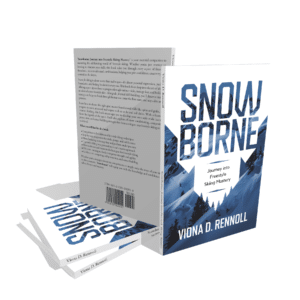Snowborne: Journey Into Freestyle Skiing Mastery – Complete Guide to Advanced Skiing Techniques

Freestyle skiing mastery isn’t just about conquering tricks on the slopes—it’s about transforming your entire skiing experience through technical precision and creative self-expression. Many skiers struggle with fear, lack proper technique progression, and feel stuck performing the same basic maneuvers season after season. “Snowborne: Journey Into Freestyle Skiing Mastery” addresses these common challenges by providing a comprehensive roadmap from fundamental skills to advanced freestyle skiing techniques. This guide uniquely combines physical training methods with essential mental strategies, helping skiers overcome psychological barriers while developing their personal style on the mountain.
Unlike generic skiing instruction books, this comprehensive ebook focuses specifically on freestyle skiing progression, offering actionable techniques for mastering everything from basic jumps to complex aerial combinations. The author emphasizes both technical skill development and mental preparation, ensuring readers build confidence alongside competence in their freestyle skiing journey.
What You’ll Discover
- Progressive Technique Mastery: Learn step-by-step progression from basic freestyle skiing fundamentals to advanced trick combinations and aerial maneuvers
- Mental Strategy Development: Discover proven techniques for overcoming fear, managing pressure, and building unshakeable confidence on challenging terrain
- Personal Style Creation: Master the art of expressing your unique skiing personality through creative trick combinations and individual flair
- Equipment Optimization: Get expert insights on gear selection, including twin-tip skis, bindings, and safety equipment for freestyle skiing performance
- Injury Prevention Methods: Learn essential safety protocols and conditioning exercises to minimize risk while maximizing your skiing potential
- Community Connection Strategies: Build meaningful relationships with fellow freestyle skiing enthusiasts and learn from shared experiences and challenges
Why This Book Matters
Freestyle skiing represents the perfect fusion of athletic performance and artistic expression, but many skiers never reach their full potential due to inadequate instruction and mental barriers. This comprehensive guide addresses the complete freestyle skiing experience, from technical skill development to psychological preparation. The author’s emphasis on gradual progression and mental resilience creates a sustainable learning path that prevents common injuries and burnout while accelerating skill development.
Rather than focusing solely on trick execution, this book teaches readers how to develop their own unique skiing style while building the confidence needed to attempt increasingly challenging maneuvers. The practical approach ensures immediate application of learned concepts, transforming theoretical knowledge into real-world skiing success.
Key Features
This comprehensive ebook spans multiple chapters covering freestyle skiing fundamentals, advanced technique development, mental preparation strategies, and equipment selection guidance. Available as an instant digital download, you’ll receive immediate access to detailed instruction guides, progression charts, and safety protocols. The format allows for easy reading on any device, with printable exercise routines for off-snow conditioning practice. Also available as audiobook on Google Play Books and Spotify for convenient listening during commutes or workout sessions.
Frequently Asked Questions
Is this freestyle skiing guide suitable for complete beginners?
Yes, the book starts with fundamental skiing techniques and gradually progresses to advanced freestyle skiing methods. The author emphasizes building strong foundational skills before attempting complex tricks, making it perfect for beginners who want to learn proper technique from the start.
How does this book address the mental aspects of freestyle skiing?
The guide dedicates significant attention to mental preparation, including fear management techniques, visualization strategies, and confidence-building exercises. These psychological tools are essential for progression in freestyle skiing and help prevent common mental barriers that limit performance.
What makes this freestyle skiing book different from generic skiing instruction?
Unlike general skiing guides, this book focuses exclusively on freestyle skiing mastery, covering terrain park navigation, trick progression, creative expression, and the unique challenges of aerial maneuvers. The specialized approach provides deeper insight into freestyle-specific techniques and safety considerations.
Get Your Copy Today
Transform your freestyle skiing abilities with this comprehensive guide. Available for instant download at just $6.99, this ebook provides exceptional value compared to expensive ski lessons or freestyle skiing camps. Also available as audiobook on Google Play Books and Spotify for flexible learning. Purchase your copy through all major ebook retailers including Apple Books, Barnes & Noble, and Kobo to begin your freestyle skiing mastery journey today.
Watch the Video Review

